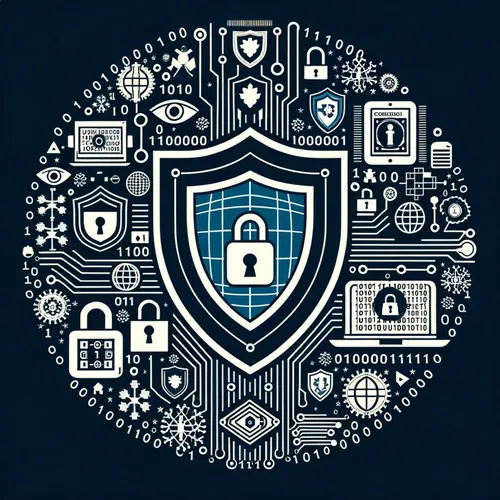Cyber Blockbuster: Patch Frenzy, Suspicious Fixes & New Threats—US vs China Showdown!
- Author
- Quiet. Please
- Published
- Wed 06 Aug 2025
- Episode Link
- https://www.spreaker.com/episode/cyber-blockbuster-patch-frenzy-suspicious-fixes-new-threats-us-vs-china-showdown--67276534
This is your Tech Shield: US vs China Updates podcast.
This week in cyber feels like a blockbuster: patch frenzies, suspicious patches, new acronym-laden threats—if you love tech drama, welcome to Tech Shield: US vs China. Ting here, with some cyber caffeine for your neurons.
First, let’s talk critical infrastructure. A wild vulnerability appeared in Trimble Cityworks, a platform local governments use to manage everything from potholes to airport runways. Darktrace spotted Chinese-speaking hackers poking around weeks before the public ever heard about the issue, proving once again that for some, Patch Tuesday is every day. This vulnerability (CVE-2025-0994) made city IT departments drop their donuts and scramble for emergency patches. The upshot? The US response included a rapid patch rollout and a flurry of new advisories—homeland security even issued a “stop using this until you’ve patched it twice!” warning. Darktrace is touting their anomaly detection: they caught things early by noticing weird download patterns, which let some agencies jump the queue on mitigation. Major props, but also—why is it always this close?
Meanwhile, the Microsoft SharePoint mess gets a starring role. Turns out, the initial patch for a brutal set of CVEs (49704, 49706, and friends) was crafted by engineers in China. Before most folks had even installed it, threat groups like Linen Typhoon and Violet Typhoon—both officially attributed to China—were already exploiting these holes, sometimes deploying ransomware before breakfast. Microsoft had to rush a better patch, raising questions about code custody: if your vulnerability patcher shares a zip code with your adversary, maybe it’s time for a rethink. The government agrees—the Defense Department now bars China-based engineers from sensitive patch work, and other agencies are reviewing their “who’s-in-the-code” policies.
Let’s not ignore the hardware layer. Nvidia’s H20 AI chips became the scapegoat du jour when Chinese regulators accused them of harboring “backdoors.” Nvidia’s chief security officer, David Reber, flatly denied it—he basically told both countries that anybody’s secret backdoor is everybody’s problem. It’s not about whose chips, it’s about what’s inside. Still, the episode reignited calls in DC to diversify hardware supply and audit everything, especially as Chinese manufacturers like DJI dominate the US drone markets, raising alarms about espionage and supply chain meddling.
In DC, the new National Cyber Director, Sean Cairncross, is getting acquainted with the hot seat. Legislative chatter and White House briefings emphasize strengthening public-private ties and finally giving the National Cyber Office some bite. USTelecom’s Jonathan Spalter and NightDragon’s Dave DeWalt both called out the urgency: America’s cyber shield has more than a few dings, and coordination is the secret sauce. Everyone agrees the next Salt Typhoon (the hack, not the spa treatment) is lurking just over the horizon—meaning everything from AI codebases to old city utilities needs locking down.
Quick hit on new tech: AI models, especially the high-stakes sort, are still wide open, as highlighted by Gladstone AI. Offensive tactics exploiting even chip energy use for hacking are making security pros sweat. The gap? America’s patch, detect, pray approach isn’t cutting it. Preventive controls—think continuous validation, hardware provenance, and zero trust—aren’t yet universal, not even close.
The experts are divided: the US is excellent at rapid after-the-fact response, but leaks and pre-patch exploits show the offense is still winning the speed game. Stronger supply chain audits, code transparency, and robust AI safeguards are the talk of the town, but implementation lags. In the meantime, companies and agencies are advised to treat every alert as urgent and adopt at least two layers of redundancy—preferably more.
